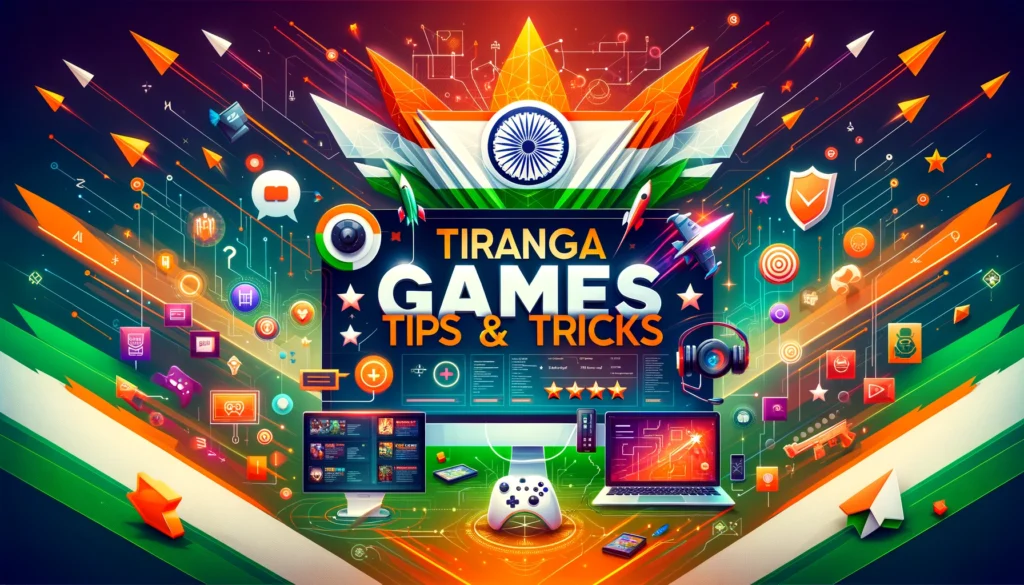Introduction
The Tiranga Game is an exciting and educational activity designed to celebrate India’s national flag, known as the "Tiranga." This game is a perfect blend of fun, learning, and patriotic spirit. Whether played in schools, communities, or during national celebrations, the Tiranga Game encourages participants to understand and appreciate the deep symbolism behind the Indian flag while promoting unity, teamwork, and respect for the country. In this activity, players engage in various challenges that highlight the importance of the tricolor and the values it represents: courage, peace, prosperity, and justice.

Objective of the Game
The core objective of the Tiranga Game is to instill the values of nationalism, unity, and cooperative spirit among participants. The game provides a platform for players to work together, understand the significance of the national flag, and celebrate India's independence in an interactive and entertaining way. It also offers an opportunity for players to learn about India’s history, culture, and the sacrifices made for freedom, making it both fun and informative.
Structure and Gameplay
The Tiranga Game can be organized in various formats depending on the number of participants, their age, and the setting. The game typically involves groups or teams, each representing a part of the Indian flag: saffron, white, and green. These colors symbolize different virtues, such as sacrifice, truth, and prosperity. The game can be designed to include both physical and intellectual challenges, promoting team spirit and national pride.
Team Organization: Players are divided into teams, each assigned a color from the Indian flag. Alternatively, a team could represent the entire flag with all three colors. Each team has a designated flag or a piece of cloth with their color as a symbol of their team identity.
Activity Stations: The game consists of different stations, each presenting a unique task or challenge. These tasks are designed to test both physical and mental abilities, with a focus on India’s history and culture. Some examples of these challenges include:
Tricolor Relay Race: Teams race to complete a relay while passing on the national flag. Along the way, they might have to answer questions related to India's independence movement or flag symbolism.
Knowledge Quiz: Players are asked questions about the Indian flag, such as the significance of each color and the meaning of the Ashoka Chakra. Correct answers earn points for their team.
Flag Puzzle: Teams are provided with pieces of a broken flag puzzle and must work together to reassemble it. The puzzle could represent different aspects of India’s history, such as major freedom fighters or milestones in the country's journey to independence.
Challenges and Tasks: The game might also include various mini-games, like tug-of-war, sack races, or trivia competitions, all designed to bring out the values associated with the Indian flag. These games emphasize teamwork, physical endurance, and the importance of knowledge about India’s past.
Victory and Celebration: The team that successfully completes all the challenges and earns the highest points is declared the winner. However, the ultimate goal of the game is not just to win but to instill a sense of patriotism and unity in every participant.
Importance of the Tiranga Flag
The Tiranga, or Indian tricolor flag, is a powerful symbol of India’s independence and the nation’s core values. The saffron color represents courage and sacrifice, white symbolizes truth and peace, and green signifies prosperity and the land. The Ashoka Chakra, a 24-spoked wheel in the center, symbolizes the constant movement of progress and righteousness. Through the Tiranga Game, participants gain a deeper understanding of what each element of the flag represents and the ideals it stands for.
Conclusion
The Tiranga Game is a fun, interactive way to teach young people about the importance of India’s flag and the core values it embodies. By combining physical activities with intellectual challenges, the game fosters unity, collaboration, and patriotism. It serves as an excellent tool to engage people in national celebrations and provides an exciting, educational experience for participants of all ages. Through the game, players not only learn about India’s history but also experience firsthand the spirit of togetherness and national pride that the Tiranga represents.